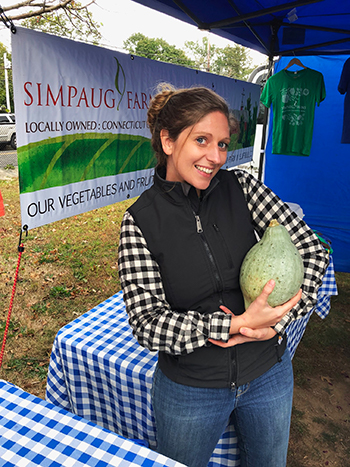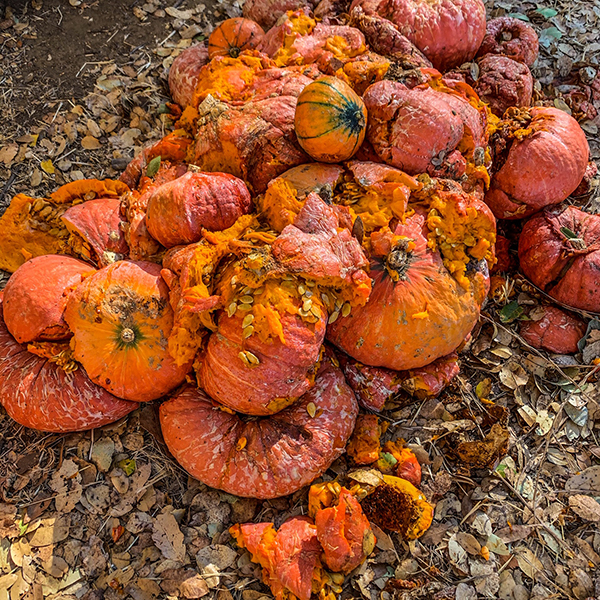Megan Robertson
They say nothing lasts forever, except perhaps a perfectly cured butternut. After sorting through bins of squishy squash in mid-October, I was compelled to ask around about hard squash storage and learn what tips farmers had to offer. Squash are notoriously prone to disease and pests, so to tend a crop all the way to storage only to have it disintegrate on the shelf is nothing short of tragic.
Getting squash from field to storage to market is a timed dance that must be choreographed to the rhythm of the season. Once the squash is fully ripe, do not delay harvest and curing. Cuts, scrapes, and bruises leave fruits vulnerable to rot.
Any fruits that are not in suitable condition should not go into storage to avoid harboring and spreading pathogens. Wiping with a dry cloth to remove dirt before final storage is preferred, although using a bleach solution or peroxide-based sanitizer is another option.

Of the handful of commercial-scale squash growers I spoke to, none were using a post-harvest sanitizer. The added handling and introduced moisture create their own potential for damage. Storing in well-ventilated, cool, dry conditions in a single or double layer is ideal. Fluctuating temperatures can lead to sweating and piled squash may be damaged by sharp stems.
If you are taking all the proper steps for storage and still experiencing premature spoilage, it could be that your crop was doomed from the start. This summer’s extended heat waves left squashes partially cooked on the vine. Both sunburn and, alternatively, chilling injury will reduce storage potential. Disease including Alternaria, Anthracnose, bacterial soft rot, black rot, Fusarium, and Phytophthora may go undetected in the field and lead to the post-harvest onset of rot.

There are preventive measures you can take in the planning stages to boost your odds of securing an enduring stash of winter fruits: avoid planting in wet fields or fields with known disease pressure, plant squash on a four-year rotation, focus on soil health, employ high fertility for full leaf canopy, treat with foliar spray for disease in the field, send a sample to a lab for pathology testing to identify disease before replanting, and shop for high-performing varieties that are suited to your conditions.
Variety selection is key in any crop. For areas prone to excessive heat and sun exposure, bush and semi-bush varieties afford a protective leaf canopy. Sweet Mama kabocha, Bonbon buttercup, and Starry Night acorn are a few favorites. The light color of delicata, hubbard, and others make them less prone to sun damage.
Red-skinned varieties tend to decline faster than their green and grey cousins. Acorn squash should be sold immediately after harvest. Winter Sweet kabocha is extremely patient and will wait out the winter alongside butternut. Tetsukabuto stores like a cannonball and still tastes nice. Take note of the expected storage life of the varieties you plant and time seasonal sales accordingly. Of course, the best test is always to conduct field and storage trials on your farm.
Though many of the steps to optimize shelf life need to be taken before squash go into storage, it’s never too early to start planning for next year. For even more ideas about long-term veg storage, read the first two articles on the subject by Sam Knapp in the February and May 2020 issues of GFM, or read them in the archives online. The the third and final part of the series by Knapp will be in the January 2021 issue of GFM.
Megan is GFM’s California-based traveling Field Correspondent and Business Development Consultant. She works as an Organic Inspector for CCOF and formerly as a Commercial Sales Rep for Johnny’s Selected Seeds. Follow her on her journey at @megan.alluvial.

